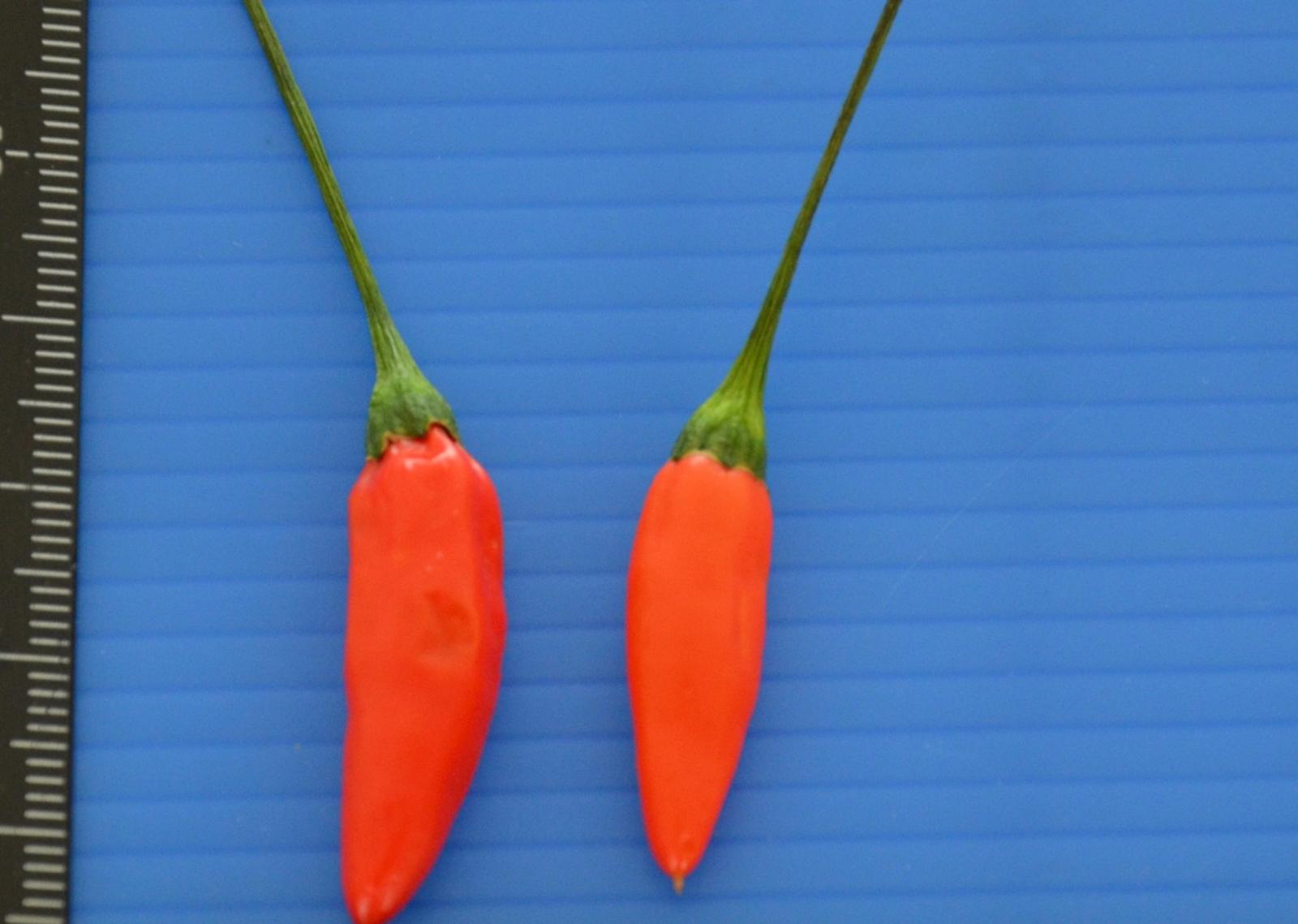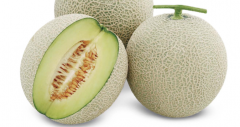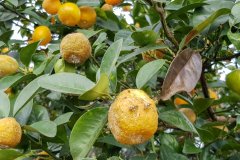How did Chaotian pepper and lantern pepper come from? What is the difference between Chaotian pepper and lantern pepper?
There are many factors affecting the planting benefit of pepper. According to the research of former botanists and the collection records of wild species of Kraft (Kraft, 2013) in Central and South America, it is inferred that there are four important domesticated pepper species: C. annuum, C. chinese, C. frutescens, C. Baccatum, three of them C. annuum, C. chinese, C. frutescens, may come from the same ancestors of wild pepper species, while C. baccatum's ancestors are different. Modern scholar Walsh (2001) used molecular biotechnology to analyze the chloroplast gene atpB-rbcL spacer on paraffin specimens of hot pepper. The classification results of evolutionary trees obtained by nucleic acid hydrolysis were consistent with the results of isomerase analysis at the pre-protein level, which supported the inferences of Andrews and other scholars.
Pepper (Capsicum spp.) is based on the English general name or representative variety name of fruit shape.
Pepper germplasm and representative varieties
According to the distribution and representative pepper species of the four domesticated pepper species most widely used in global cultivation or breeding, they are described as follows:
1. C. annuum pepper originated from the wild species C. annuum var in Mexico. Glabriusculum (also known as bird pepper), domesticated and cultivated, has become the largest and most extensive economic species in the world. C. annuum has a large number of provenances. According to the national provenance system of the United States Department of Agriculture, the total number of pepper provenances is 6194, of which C. annuum is 4028, accounting for about 65%. The germplasm bank of the Asian vegetable ─ World vegetable Research and Development Center is currently the unit with the largest number of pepper species. Its pepper collection system is 8165, accounting for about 11% of the world, of which C. annuum is 5537, accounting for about 66%. Therefore, C. annuum can be called the largest kind of pepper.
Therefore, it is not difficult to see that C. annuum covers all sweet pepper varieties and most economically cultivated pepper varieties. Its fruit shape varies greatly (fruit length 0.5cm to 20cm, fruit weight 1g to 250g), fruit shape is round, pumpkin-shaped, cone-shaped, long-shaped, bell-shaped and so on. C. annuum pepper has its own name according to fruit shape or specific wild species, such as cayenne pepper, cherry pepper, long (green) pepper, pimento pepper, aji, jalapeno, pasilla, piquin, serrano bird pepper (C. annuum var. Glabriusculum), etc.
C. frutescence pepper species originally distributed in the tropical America at low elevations, such as Colombia, Ecuador and El Salvador. It is commonly known as "Chaotian pepper" in Chinese, and the representative variety is "Tabasco", which is famous for its chili sauce. The fruit of Chaotian pepper is small, mostly round or long oval. C. most of the frutescence are chili peppers, except that a few are not spicy because of the spicy gene mutation. C. frutescence is commonly known as bird pepper, or Tabasco pepper.
Capsicum frutescens var. The fruit of the cultivated species "Tabasco".
C. chinense pepper is originally distributed in the Amazon, commonly known as "Lantern Pepper" in Chinese. As the name implies, its fruit is lantern-shaped. Lantern pepper is famous for its "spicy", "habanero" is a classic variety, but Bhut jolokia, which is famous for its extremely spicy pepper, is an interspecific hybrid of C. chinense and C. frutescens. C. chinense is an excellent raw material for making hot and flavored chili sauce.
C. baccatum pepper species originally distributed in Bolivia, Brazil, Peru, Uruguay and Argentina. C. the Corolla of baccatum has yellow or green spots, which can be easily identified with other pepper species. C. The pericarp of baccatum is obviously wrinkled. The shape of small fruit less than 10g is round or long oval, and the shape of larger fruit larger than 25g is long pendant or papaya. The fruit has a unique aroma, spicy from slightly spicy to extremely spicy; the representative variety is "Aji", the shape of the fruit is pendant shape.
Capsicum baccatum var. "galapagoense" domesticates the fruits of cultivated species.
The spicy ingredient "capsacinoids" of hot pepper contains at least 10 kinds of isomers, among which capsaicin (CAP) and dihydrocapsaicin (DHCAP) are the main components, accounting for about 90% of the total capsaicin.
The biosynthesis of capsaicin contains two main metabolic pathways, one is phenylalanine metabolism, which is the precursor of vanillin, and the other is valine acid, which is used to produce side chain fatty acids. The first two are catalyzed by capsaicin synthase to synthesize capsaicin.
Capsicum baccatum var. Fruit profile of "galapagoense".
The main components of spicy flavor are capsaicin and dihydrocapsaicin, which are colorless and odorless compounds, which specifically exist in the epidermis next door to ─ (septum) above the placenta (placenta) of seeds, and store these spicy substances in the form of oil bubbles. Therefore, the white diaphragm next to the placenta of the fruit is the hottest part of the pepper; the way to reduce the spicy taste is to carefully remove the near white next door and eat the bright flesh.
In modern times, a number of pharmacists have studied the health potential of capsaicin-like (capsacinoids), which has been proved to have special effects such as anti-inflammation or pain relief. Pharmacological and clinical trials continue to be conducted on the health uses of high-spicy capsaicin-like substances (CAP or DHCAP) or low-spicy capsaicin esters (capsinoids).

- Prev

Introduction of thick-skinned melon species and sowing time of Xianghua / Enhua / Fuhua / Tianhua muskmelon
Melon, is one of our common fruits, it tastes sweet, a bit like cantaloupe, very popular with consumers, melon varieties are also more, melon sweetening tips, can make melons sweet, let's take a look at the introduction of thick-skinned melon varieties
- Next

Kumquat planting technology management technology: simple net room planting kumquat, kumquat anti-fruit fly effect is good
In the past, protected cultivation of fruit trees was mostly used in fruits with high unit price or difficult to control diseases and insect pests, such as vertical cultivation techniques of papaya and muskmelon. This year, Yilan also launched kumquat cultivated in a simple net room. After more than 2 years of field investigation and evaluation, Hualien District agricultural improvement farm was developed.
Related
- The first cup of black tea in spring, the flavor and history of tea gardens in Kenya, Africa
- The computer can not only choose potatoes, but also grow tea rice. AI will grow winter oolong tea champion.
- It is not only the inflated tea bitten by insects, but also engraved with the four seasons tea in Beipu.
- The Oriental Beauty Tea Festival in Zhuxian County takes the stage at the weekend to experience the plus-size feast of oil tea.
- & quot; Oriental Beauty Tea & Exploration of Emei in Hsinchu, the hometown of quot;
- The new variety of strawberry "Tainong 1" dessert is the first choice with mellow aroma. Crimson gorgeous
- History of Tea in Taiwan: from Wild Inner Mountain to Export Tea Garden
- Two types of Taiwan Oriental Beauty Black Tea won the British three-Star Award for Childhood Tea Xiang Zhang Jiaqi changed from pilot to champion tea maker.
- Banana species and varieties: the planting history of Taiwan Xianren banana and dwarf banana is long, is banana disease resistant?
- Coffee planting Technology: Qianjie Coffee from Seedling to harvesting

